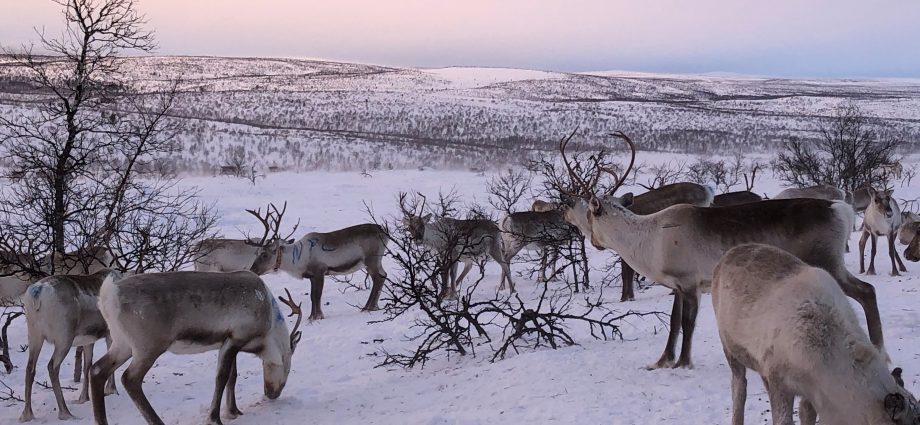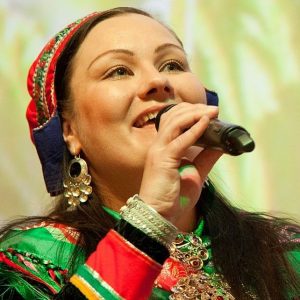Annukka Hirvasvuopio-Laiti, Musician, ethnomusicologist, reindeer herder, assistant professor in Sámi language, Finland
The Sámi (sápmelaš, pl. sápmelaččat) are an Indigenous people with their own history, language, culture, way of life and identity. The word “Sámi” comes from the Sámi word Sápmi, which means both the geographical area traditionally inhabited by the Sámi and the actual Sámi ethnic group. The Sámi are one nation that has been recognized as an Indigenous people and lives in Scandinavia in Finland, Norway, Russia and Sweden. The area inhabited by the Sámi extends from central Norway and Sweden over the northern part of Finland to the Kola Peninsula. There are a total of between 60,000 and 100,000 Sámi living today, depending on which inclusion criteria are employed.
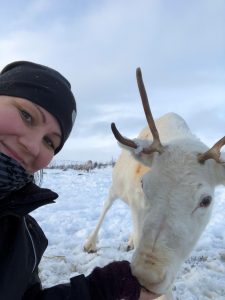
Sápmi is often divided on maps according to language areas. There are several Sámi languages and three of them (Inari Sámi, Skolt Sámi and North Sámi) are spoken in Finland. Skolt Sámi is also spoken in Russia as well as Kildin Sámi and Ter Sámi. North Sámi can be considered the dominant language with the most speakers. In addition to Finland, North Sámi is also spoken in Sweden and Norway. The Sámi languages spoken in Norway and Sweden are also Jule Sámi, Bite Sámi, Ume Sámi and South Sámi.
In addition to the common language, the Sámi of different countries are united by, for example, traditional livelihoods (such as reindeer herding, fishing, hunting) the same/similar traditions of costumes and handicrafts, and the tradition of music. Traditional music genres often follow language groups, although in addition to the different dialects of the languages, local features are also strongly present in the musical traditions. In Finland there are livđe chanting tradition of the Inari Sámi and leu’dd chanting tradition of the Skolt Sámi. Leu´dd and luv´tt are also present in Russia. In Norway and in Sweden, there are vuolle and vuelie traditions among the Lule, Ume and South Sámis.
The traditional vocal music style of the North Sámi is yoik. Luohti is a Sámi word describing one particular yoik. The verb juoigat means to yoik someone or something, not yoik about someone or something. It can’t be equated with a pair of concepts “sing a song” or “yoik a luohti”. In the Sámi language, yoiking is distinguished from singing, which uses the verb lávlut, and they are two entirely different things. Characteristic features of the North Sámi yoik are the distinctive chanting style and rhythms, improvisation, unaccompanied, juoiganstávvalat use of ‘yoik syllables’ (hey-yo, lo-laa, naa-naa) and the close relationship of this musical tradition with the rest of the culture.
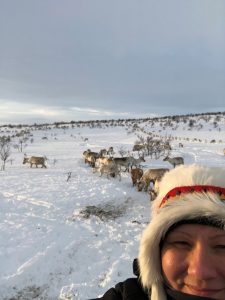
One can yoik a person (personal yoik), an animal, even some natural site. A Sámi yoiker and teacher Ánte Mihkkal Gaupstates that a personal yoik is like a name for a Sámi. It is called by the concept of luohtenamma. The personal yoik is so personal and descriptive of its object that, according to Gaup, it can be seen as an equally integral part of the Sámi’s personal identity as the first and last name. Luohtenamma is an important part of Sámi identity. I would say that a personal yoik is like a “musical photograph” of a person.
North Sámi music tradition is strongly related to reindeer husbandry culture. In addition to work related to reindeer husbandry, the reindeer herders have often yoiked. Yoiking was a pastime when moving from place to place and, among other things, during long winters, when the reindeer herder on duty stayed awake guarding his flock. In addition to the burning campfire, the human voice has also been said to have served to frighten predators away.
One may wonder if the preservation of the entire Northern Sámi music tradition or even the preservation of Sámi culture and language to this day on a whole is a sort of miracle, as there has been so much pressure to quash it over the years. The practice of witchcraft was banned in Sweden-Finland in the 17th century, as well as the use of the witch drum which was used by Sámi shamans during rituals. Those who broke these laws faced execution. As late as 1734, the Swedish-Finnish Penal Code stipulated the death penalty for witchcraft. In addition to practicing witchcraft, yoiking was also prohibited during rituals. During the spiritual rituals the Sámi shaman used drumming as a means of falling into a trance and the drum was also used in a divination. The priests did not understand the function of the yoik in Sámi society but only saw the connection to the shamanism. This led the entire Sámi music culture to being condemned as a sin. Although the death penalty as punishment for yoiking was eventually abandoned, it was replaced in the 19th century by the religious movement of Lars Levi Laestadius and the very negative attitude towards the yoik in Finland, Norway and Sweden.
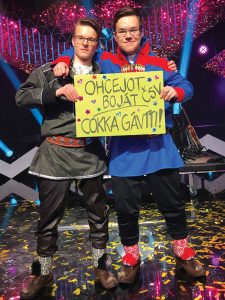
A Sámi researcher Veli-Pekka Lehtola describes the era from the 1960s onwards as a “Sámi Renaissance”. According to him, the movement at the turn of the 1970s was characterized by a breakthrough in Sámi culture on a very broad front: in politics, the media, culture, education, and society activities. Also, as professor Vuokko Hirvonen states, the yoik has experienced a renaissance in the last decades: more and more traditional yoiks have been published, new yoiks have been made and a new kind of yoik tradition has emerged. Nils-Aslak Valkeapää, or Áillohaš, (1948–2000) as he was known by his people, was a Sámi multi-artist born in a reindeer herding family in the Finnish side of Sápmi. His debut album Joikuja (OTLP-50) in 1968 made history because traditional yoiks had never before been recorded with musical accompaniment. The Joikuja album started a whole new era in Sámi music and was the basis for Sámi popular music. Today, Sámi modern music is very versatile and Sámi music can be found in almost every genre of music. You can find Sámi rap, dance music, children’s music, spiritual music… The appreciation of traditional yoik is still high among the Sámi people, and for example various educational projects have been developed to preserve it. This is evidenced, for example, by the fact that the annual Sámi music festival in Kautokeino, Norway, includes a music competition, which has its own series for traditional unaccompanied music and modern music. Traditions are valued, space is given to modernity.

